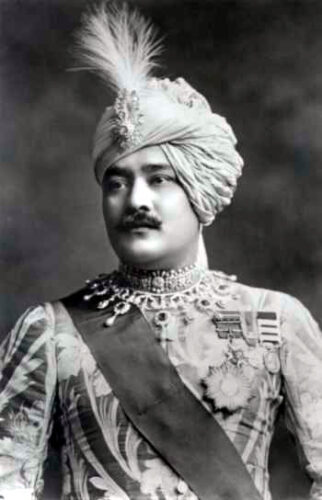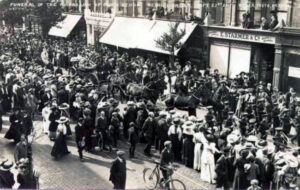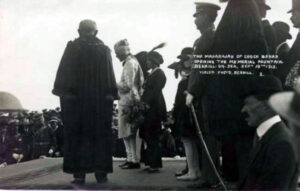
There are many local myths regarding the Maharajah of Cooch Behar, the most popular being that he built Marina Court Avenue on the seafront, as a seraglio for his harem – which is not true. The oriental style of many of the buildings on the seafront was simply an expression of late Victorian taste, following the example set when the Kursaal was opened in 1896. They were all built before the Maharajah came to Bexhill.
The Maharajah HH Sir Nripendra Narayan was born on the 4th October 1862. He succeeded his father in 1863 and was formally installed on reaching his majority in 1879, as Maharajah of a 13 Gun Salute Indian Princely State of some 1300 square miles in area located 400 miles or so north of Calcutta. In 1878 he married Sunity Devi, eldest daughter of reformer Keshub Chander Sen. She bore him 4 sons and 3 daughters. One or more daughters were educated at Queenswood School in Eastbourne, with Princess Indira of Baroda. Queen Victoria acted as godmother to their son Prince Victor. The eldest son was Rajendra who died in 1913, having succeeded his father in 1911. It is said that Rajendra drank himself to death on champagne in Cromer, because his family would not allow him to marry the American actress Edna May. Both are known to have visited Bexhill in 1902.
Volunteering for Military Service
The Maharajah volunteered in 1897 for service in the Frontier War and later in 1899 for the South African War. For his service in the Tirah he received the Order of the Bath. He was an Hon. ADC to King Edward VII and an Hon. Col. attached to VI King Edward’s Own Cavalry. In order to attend King Edward’s Coronation in 1901 the Maharajah and his family had taken up residence at Moor Hall at Ninfield (demolished 1997). The Maharajah’s family knew Bexhill through their association with Moor Hall and were friends of the local Pape family. Their son Lionel became a member of the Maharajah’s staff.

Funeral
On the occasion of King George V’s Coronation in 1911, the Maharajah leased 22 Marine Court Avenue in Bexhill. His Highness had been unwell for some two years previously and it is presumed that his doctors recommended Bexhill because of its reputation as a health-giving resort. The Maharajah died at his Bexhill seafront residence on the 18th September 1911. His funeral was a stately affair; the coffin passing with solemn ceremony through the streets of Bexhill, before being transported by train to London for ritual Brahmo Samaj cremation.

Memorial
His second son, Jitendra, succeeded his brother Rajendra as Maharajah in 1913 and returned in that year to open a drinking fountain to the memory of his father on the 18th September. The fountain was on the site where the De La Warr Pavilion was later built. In 1922 the Dowager Maharani made a brief visit to Bexhill to place a wreath on the memorial fountain. The fountain was moved to Egerton Park when the De La Warr Pavilion was built in 1935, but was removed and lost in 1963. A solid 20 carat gold Indian Memorial Plate was also presented to the town.
Gayatri Devi, Rajmata of Jaipur, daughter of HH Jitendra and grand-daughter of HH Nripendra opened the Museum’s ‘Bexhill’s Maharajah’ Exhibition in 1998, on the 87th anniversary of the Maharajah’s funeral.

